Courting & Mating
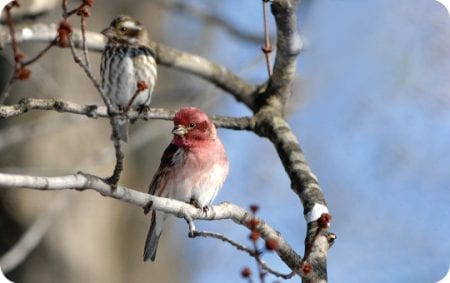 Courting and Mating: Birds court one another with dances, songs and building nests.
Courting and Mating: Birds court one another with dances, songs and building nests.
Love’s a many splendored thing!
From dancing to eating to nest building to singing, birds have many courtship rituals. And springtime is the most likely time for you spot some of these unique behaviors right in your own backyard.
If you have woodpeckers in your yard, you probably already know one way these birds go after a partner – by rat-tat-tatting on your house or gutter downspouts. They can make quite a racket – the louder the better! Other birds use sound to attract their mates but do so with a song or repertoire of songs. The same rule applies – more is better. A male with a larger repertoire of songs may be considered more attractive than one with only a few songs.
Seabirds and waterfowl bob their heads, bow and flutter their wings to attract their mates. Cranes are well known for their fantastic dancing as they begin their courtship. Mourning Doves and mockingbirds also will fluff out their feathers and dance a little mating two-step. Jays and cardinals will offer their female partner a sunflower seed as a gift of affection.
House Wrens are known to build nests for their mates. They show the females the nests and let her choose. Then the male finds another female to occupy one of the remaining nests.
Peek out the window and let us know what signs of love you spot.
Mating: Makin’ Whoopee – Bird Style!
Most birds mate for only one season – and only one reason. Some species, however, mate for life while others mate multiple times during one season.
Geese, swans and eagles are known for having only one mate until one of them dies. This practice is unusual in the birding world even though most birds are monogamous for at least one breeding season. Recent research has shown that even monogamous birds may bond with another bird that is not its partner to enhance its breeding success.
Some birds, such as House Wrens and hummingbirds, have multiple mates. This practice is rare, occurring in only about 2 percent of bird species. And when it does happen, it generally is difficult for the male to provide proper care for all of his broods. The males are most successful at this in habitats that are rich in resources.
After hummingbirds mate, the male will court and mate with another female. Females raise the babies alone. Closely related species of hummingbirds will mate with each other with crosses occurring between Anna’s and Costa’s hummingbirds.
House Wrens build multiple nests and let the female choose the one she prefers. After they mate, the male may try to attract another female to occupy one of the other nests he’s built. Then the male will divide his time trying to help raise multiple families at once.
Keep an eye on your backyard and tell us about the bird families you see.

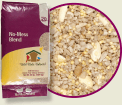




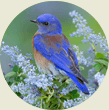
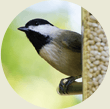
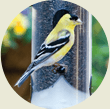
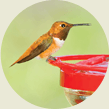

 Courting and Mating: Birds court one another with dances, songs and building nests.
Courting and Mating: Birds court one another with dances, songs and building nests.



